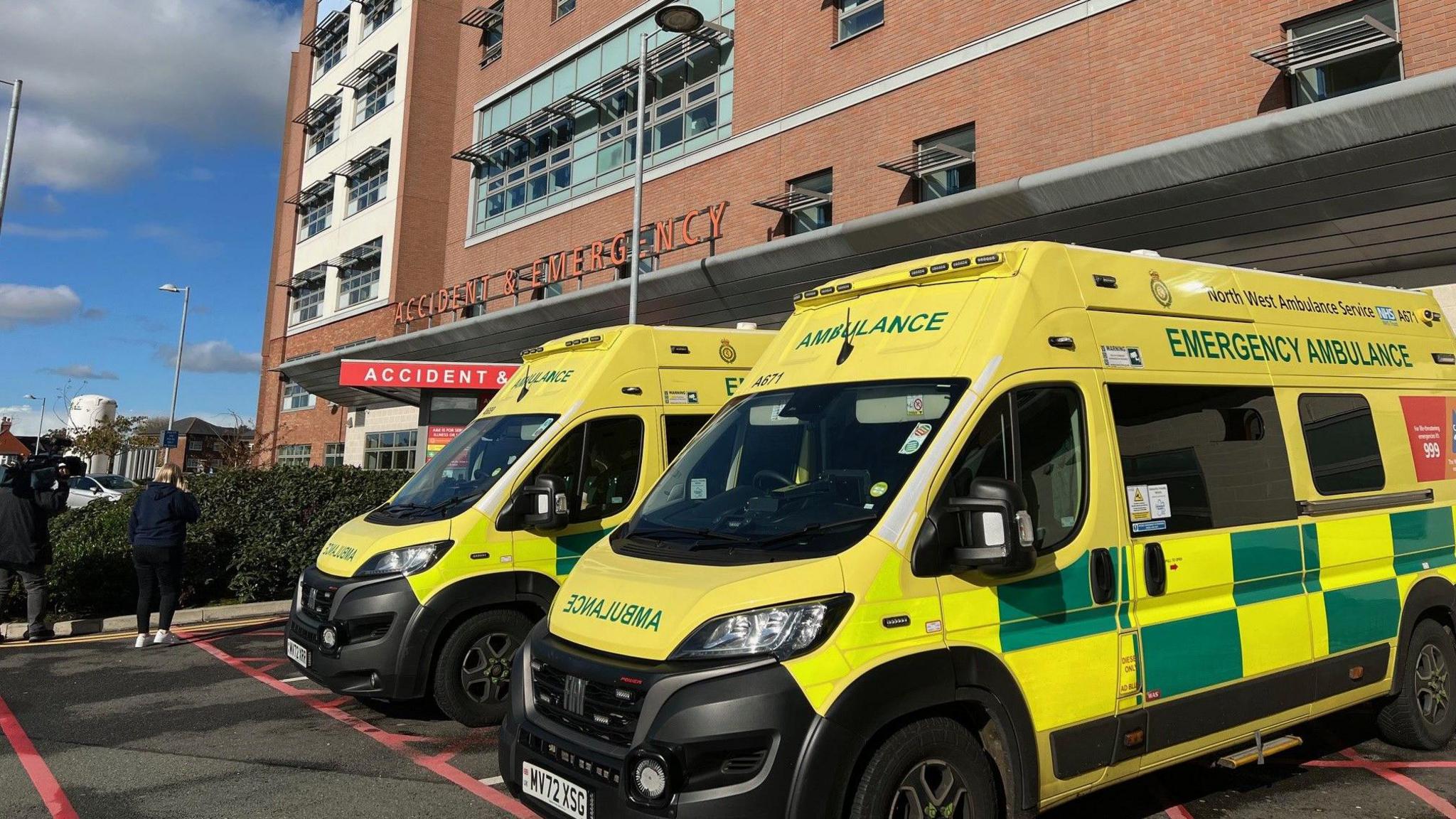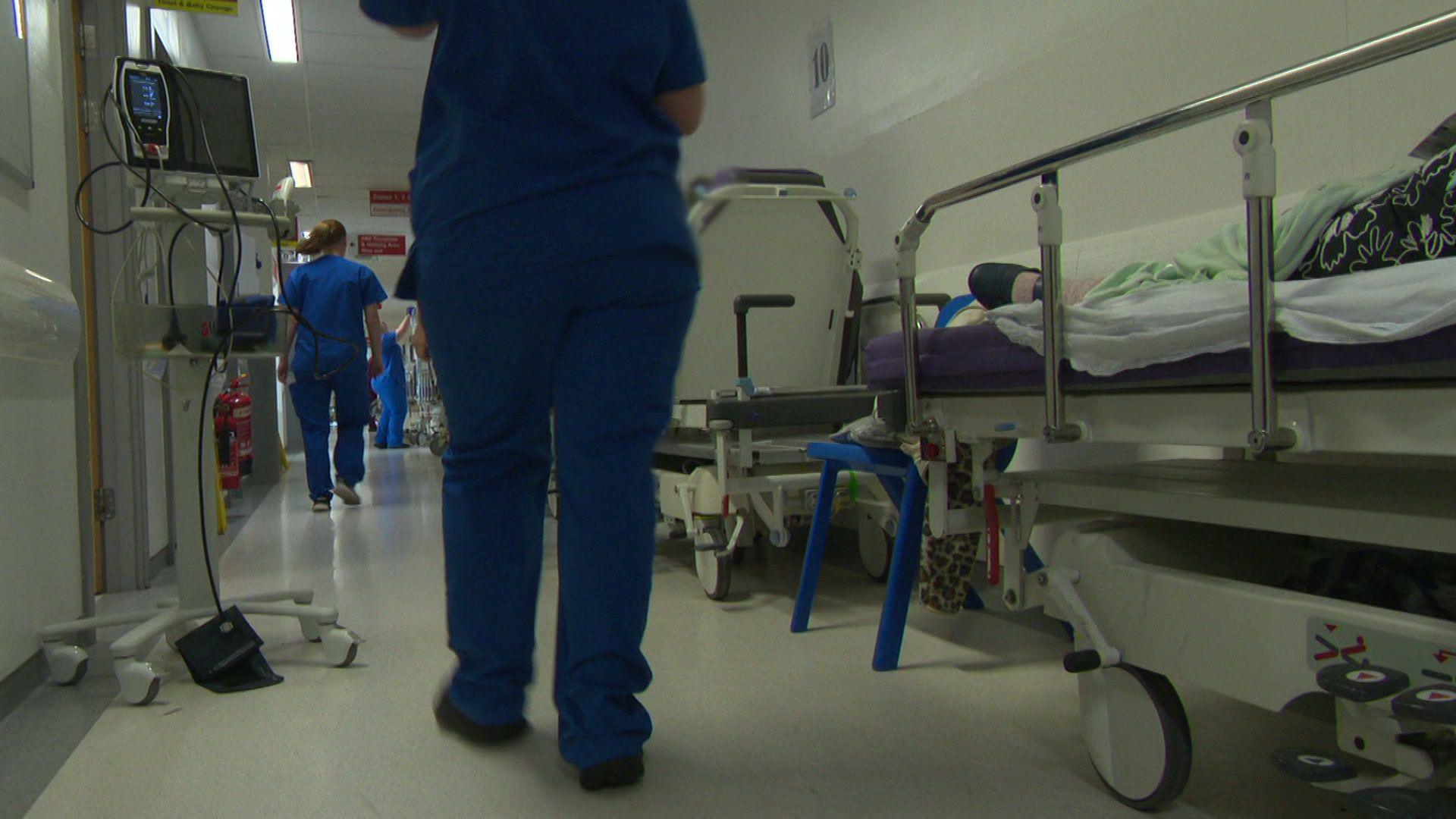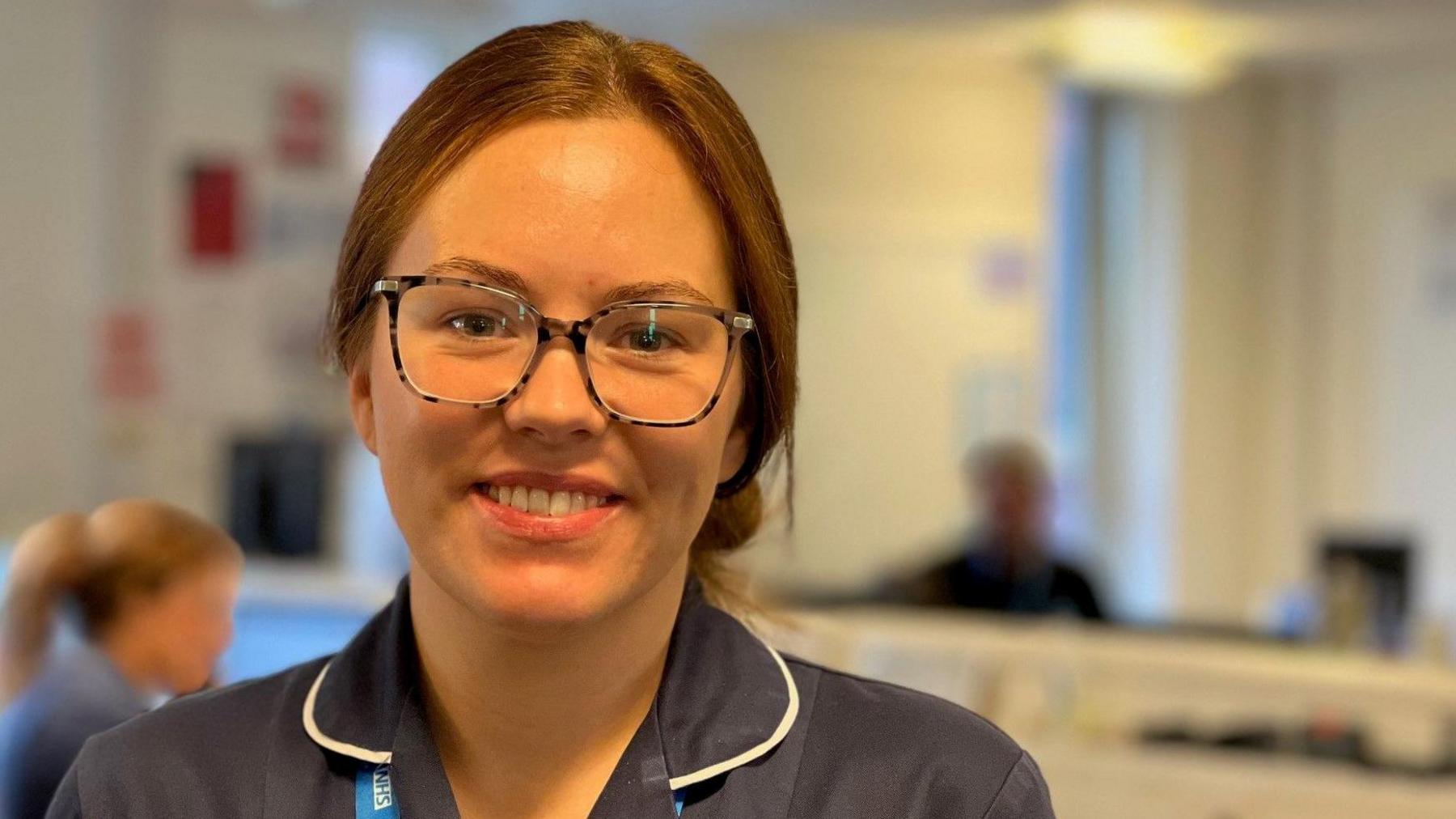How staff keep Merseyside's busiest A&E running

Dr Jessica Wildman is a speciality doctor in frailty
- Published
Record numbers of patients in the North West are waiting 12 hours or longer to be admitted to hospital from A&E.
The news comes despite months of preparation by hospital staff, who are ramping up schemes to look after people in the community.
Innovations include "virtual wards", where doctors monitor patients at home, and emergency community response teams of nurses, therapists, and social care workers.
But the most recent monthly NHS figures for the region show a rise of nearly 9% from the same time last year.
BBC North West went to Whiston Hospital in St Helens, the busiest A&E in Merseyside, to see how staff are trying to relieve the pressure for patients.
Like many hospitals, corridor care is now a fact of life for much of the year here.
There are now formal staff shifts to look after the patients there, with numbered areas along the corridor for each trolley.
Rita, 81, was one of them.
She had been arrived at the hospital after a fall and was suffering from chest and back pains.
Speaking on behalf of her mum, daughter Diane Palfrey was still optimistic about the situation.
She said: "It's just what you expect when you come to A&E now. Obviously, everyone's just so busy and overrun so you expect that you are going to be waiting a little time"
"She's had her bloods done, they've ordered x-rays, the doctor's been to see her, ordered ECGs so she's being very well looked after."

In the NHS, winter comes early and a sudden cold snap can bring a rush of patients to A&E, particularly those who are older and more vulnerable.
Emergency Department Matron Su Hobbs was five hours into a 12 hour shift.
"We've had lots of frail elderly patients with us in the last couple of days, and unfortunately we're a little bit congested this morning," she said
"Lots of people on trolleys that are slowly moving through the department."
Su stressed that the wait that morning was two or three hours and that patients were constantly assessed.
"They will be seen by doctors, they will have all the nursing care…as soon as a bed becomes available everyone is moved along the corridor until they get into a bed space," she said.
Patients on the trolleys are treated and care for as if they were already in that bed.
But this still isn't what anyone wants.
The problem of patients being stuck in A&E is a national one and it happens because the rest of the hospital is full.
The root cause is an inability to discharge patients who no longer need to be there, often because there isn't enough community or social care in place to look after them, and most of the patients involved are the "frail elderly", who need packages of care put in place.
Whiston, like many hospitals, has spent the past few years building up a wider support structure to try to improve this.

They now have 75 "virtual ward" beds, where low risk patients are cared for in their own home or elsewhere in the community, like a care home.
The idea is to replicate the care a patient would get in hospital, but somewhere else.
They are regularly checked and treated by nurses and therapists, who then report back to a senior doctor, who takes charge of their overall care.
Dr Jessica Wildman is a speciality doctor in frailty who spends part of each day heading meetings deciding patient treatment.
She said conditions varied from heart problems to delirium.
"Rather than having them come into hospital we start the initial investigation and diagnosis in the community," she said.
Dr Wildman added that hospital stays can often cause problems for older and more vulnerable people, who can lose muscle strength and independence from long periods in bed.
"We know often patients are at risk of getting hospital acquired infections, hospital acquired pressure sores, episodes of delirium, they're prone to falling over more frequently," she said.
"We've had some really positive feedback from patients and their family members. We know that ultimately these frail elderly patients do better in their own environments."

Sarah Rawsthorn said several specialists are often needed to build a picture of a patient's needs
Virtual wards are just one part of an increasing network of out-of-hospital medical and social services.
The hospital trust also runs several urgent community response teams made up of nurses, social workers, and therapists who can respond within two hours to a request.
Calls come from carers, GPs, and patients themselves and are triaged to provide the most appropriate help.
Sarah Rawsthorn is a frailty nurse practitioner with the St Helens team and says that a visit from one specialist can often lead to another, to build up a full picture of a patient's needs.
She said: "The social worker might go out and think – this person looks quite unwell,
"We can go and assess them. We can get the physiotherapist, occupational therapist who can provide emergency equipment"
"We'll do bloods on all of our patients, we'll do a full assessment, and then we can implement a plan of care."
For those who are more unwell, there's a special unit within the hospital where older patients can be assessed, with a variety of comfy chairs and beds to wait in.
Again, older people are prioritised here, often being taken straight out of A&E to spend their time in a calmer environment.
Dr Wildman said patients were given a full health and social care check, again with the aim of getting them back out into the community rather than waiting for a hospital bed.
This can include discussions with relatives and social services about extra equipment or support at home or respite care.
Huge amounts of work are being done in all of our hospitals to try to avoid the scenes from last winter, when several hospitals in Merseyside declared critical incidents because of overcrowding in A&E.
But despite the efforts, the latest NHS figures show a situation worse this year than last.
'Winter the hardest'
In September, 4,470 patients in Cheshire and Merseyside waited more than 12 hours to find a hospital bed – the highest figure in the country and 8.3% higher than September 2024.
For the North West as a whole that figure was 9,745, nearly 9% up on this time last year, and it's a pattern repeated around the country.
And despite efforts to keep patients out of major A&Es, last month more than 16 thousand more people went there than the previous September, a rise of 8%
Emergency Department Matron Su Hobbs said the hospital was much better equipped to deal with patients than this time last year – but that the months ahead were hard to predict.
"The weather has gone much colder, the acuity of patients is much higher. People are coming in much more unwell than they were previously as we move into winter," she said.
"We'll just have to see what each day brings us and work well with that."
Dr Michael Gregory, regional medical director for NHS England in the North West, said: "We know we have to do more to tackle the unacceptable waits many people experience in our emergency departments and we are profoundly grateful to NHS staff working hard to care for patients and reduce those waits even as demand for our services continues to rise.
"Initiatives like same day emergency care and urgent community response are helping more people to get the care and treatment they need at home, avoiding an A&E attendance or hospital admission and helping to manage pressures on urgent and emergency services.
"September was the busiest month on record for A&E and ambulance services and that shows every sign of continuing into the winter.
"The public can play their part by getting vaccinated and using services in the usual way calling 999 in an emergency and NHS 111 online for other health conditions.
"Winter is always the hardest time for the NHS, and it is a particularly challenging time in the North West where people face significant health inequalities compared to other parts of the country, including lower life expectancy and poorer health outcomes which impact on the number of patients who need urgent and emergency care services."
Get in touch
Tell us which stories we should cover in the North West
Read more stories from Cheshire, Lancashire, Greater Manchester and Merseyside on the BBC, watch BBC North West Tonight on BBC iPlayer and follow BBC North West on X, external.